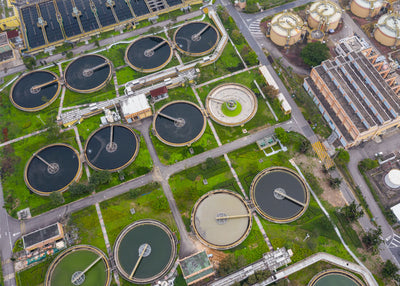California Drought Update July 2021
A catastrophic drought of historic proportions has gripped most of the western half of the United States. California and the Southwest are particularly hard hit, but the drought also affects the Pacific Northwest, most of the Intermountain West, as well as the Northern Plains.
Drought emergency declarations have been made. Farmers and ranchers are having a hard time. States are being forced to cut down on their water supplies. Large wildfires started sooner than normal in Arizona, New Mexico, and other states, with more significant fires raging.
There doesn't seem to be much hope in sight.
What Exactly Is a Drought?
There are no exact specifications that define a drought, but it is commonly understood to mean a period of unusually dry weather that lasts long enough to affect water resources, farming, livestock processes, power generation, and other operations.
Droughts typically begin with below-average precipitation (and what is normal varies from region to region). If the drought continues, river flows, reservoir levels, and groundwater levels will begin to decrease. Warm temperatures also have an effect, forcing winter snow packs to melt more quickly, affecting water availability across the year. Extreme temperatures also increase evaporation from soils and plants, resulting in crop failures and raising the danger of catastrophic wildfires.
The United States Drought Monitor, a project of multiple government agencies and the University of Nebraska-Lincoln, assesses the intensity of drought in a particular region, rating it from moderate to exceptional, according to experts. They use a variety of variables, including total precipitation, snow pack, stream flows, and soil moisture readings, as well as pictures from remote-sensing satellites to evaluate vegetation health.
How Severe Is the West's Current Drought?
It's very terrible, both in terms of the afflicted area's size and intensity. According to the most recent drought map from the drought monitor, 90 percent of the West – Montana, California, Idaho, Washington, Oregon, Utah, New Mexico, and Nevada — is under drought. About half of the area is experiencing “severe” or “exceptional” conditions. North and South Dakota, as well as Colorado and Wyoming, are impacted.
However, maps only reveal half of the truth. The drought is wreaking havoc throughout the West, where water demand has skyrocketed in recent years as the population has increased.
Farmers near the Rio Grande in New Mexico were advised not to cultivate this year. In Colorado and other agricultural regions, crop failures have been recorded. Lake Mead, the massive reservoir on the Colorado River, is at such a low level that Arizona, Nevada, and other states will probably have to cut down on supplies. Because the rangelands are so dry and the flora so stunted, ranchers in North Dakota are hauling water and supplementary feed for their cattle.
California is in particularly poor condition. The state's reservoirs contain roughly half as much water as they usually do at this time of year. Water supplies from the federal government's massive Central Valley Project to California communities and farmers have been reduced by 75%. On the Oregon border, both endangered fish and farmers are running out of water.
California, Arizona, and New Mexico have already seen wildfires, the magnitude of those witnessed in the summer. Wildfires are expected to be intense and widespread this summer, according to experts.
Isn't the West Usually Dry? Is Drought a Natural Process?
True, the West is generally hotter and drier than the rest of the nation. The desert covers most of the Southwest and portions of Southern California. For example, Las Vegas receives approximately four inches of rain each year, or about a tenth of the national average. The remainder of California has a Mediterranean climate, which is rainy in the winter and hot and dry in the summer.
Water has always been a problem in the West, and hundreds of billions of dollars have been spent on infrastructure to get water from its source — mostly the mountains — to cities and farmland during the last century.
Droughts are also an aspect of life in the area, as they are all across the world. They've happened on a frequent basis throughout the ages.
However, experts claim that climate change, in the form of rising temperatures and shifting precipitation patterns, is exacerbating the problem. In a world without global warming, what would have been a mild drought has become more severe.
Areas that would usually spend a few weeks without rain may suddenly go months. More rain than snow falls in the mountains, reducing snowpack. Even a good snowfall melts quicker these days, making it more challenging to manage the water supply. In addition, when temperatures increase, soils and plants lose more moisture.
When Will the Drought End?
It is expected to continue throughout the summer, according to meteorologists. Over the next several months, they expect the West to remain hot and dry.
In California and the Pacific Northwest, the autumn and winter are typically wetter, which may help. The Southwest monsoon, a pattern of summer storms that affect Arizona, New Mexico, and other parts of the Southwest, could be helpful. However, the monsoon is unpredictable; the 2019 and 2020 monsoon seasons delivered so little rain that they were dubbed "nonsoons" and contributed to this year's drought conditions.
Even if the West becomes wetter in late 2021 and early 2022, the respite may only be brief for most of the area. A warmer spring and summer next year may quickly deplete the snow pack, streams, and reservoirs, as well as dry up the land, bringing drought back.
This has been the trend in the Southwest since 2000. Though there have been a few wet years since then — the most recent being 2019 - the drought has continued. It would take many rainy years in a row to eliminate the drought, and although such a prolonged wet period cannot be ruled out due to natural climatic variability, climate change makes it less probable.
The drought in the Southwest has lasted so long that some experts believe a mega drought is forming in the area, one that is comparable to, or perhaps worse than, those that have happened in the previous 1,200 years and lasted for 40 years.














